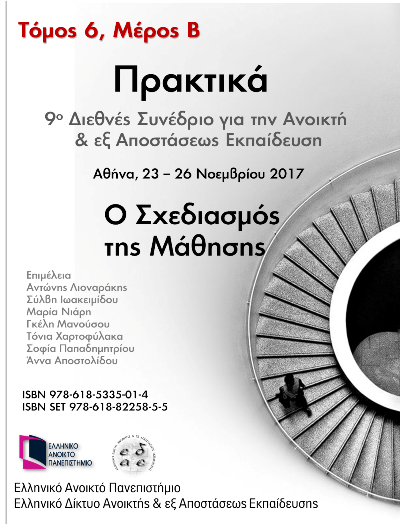Χρήση κινούμενων σχεδίων με τρισδιάστατες απεικονίσεις, για τη διδασκαλία των εννοιών των στερεών και των κρυσταλλικών δομών τους, στην Τριτοβάθμια Εκπαίδευση

Περίληψη
Η εργασία εστιάζει στην παρουσίαση και μελέτη των εννοιών των στερεών και των αντίστοιχων κρυσταλλικών δομών τους, του μαθήματος της Γενικής και Ανόργανης Χημείας στην Τριτοβάθμια Εκπαίδευση. Οι συγκεκριμένες έννοιες προϋποθέτουν από τους φοιτητές σε επίπεδο κατανόησης υψηλού επιπέδου νοητικές διεργασίες, καθώς διαθέτουν τη χωρική ικανότητα και τις γνωστικές δεξιότητες να κάνουν τις κατάλληλες συνδέσεις μικρόκοσμου με μακρόκοσμο. Γι’ αυτό το σκοπό κατασκευάστηκε ψηφιακό εκπαιδευτικό υλικό που εμπεριέχει τρισδιάστατες απεικονίσεις με δυνατότητες περιστροφής, μεγέθυνσης, σμίκρυνσης δομών. Παράλληλα χρησιμοποιήθηκε ο συνδυασμός των εκπαιδευτικών διαδραστικών κινουμένων σχεδίων cartoons με τα τρισδιάστατα γραφικά με χρήση ελεγχόμενης κίνησης, για τη δημιουργία εφαρμογών που τρέχουν διαδικτυακά αλλά και τοπικά, και που έχουν πλήρεις δυνατότητες σε περιβάλλον windows και android, καθώς διευκολύνουν από τεχνικής πλευράς, αλλά και προσελκύουν τον χρήστη/ φοιτητή να περιεργαστεί και να μελετήσει έννοιες υψηλού γνωστικού φορτίου. Στοχευόμενα από το μάθημα της Γενικής και Ανόργανης Χημείας που διδάσκεται στο Εθνικό Μετσόβιο Πολυτεχνείο, έγινε επιλογή των εννοιών των στερεών με τις αντίστοιχες κρυσταλλικές τους δομές, επιδιώκοντας μέσω κατασκευής κατάλληλου ψηφιακού υλικού να κατανοήσουν οι φοιτητές ορισμένες φυσικοχημικές ιδιότητες τους.
Λεπτομέρειες άρθρου
- Ενότητα
- Τμήμα Β


